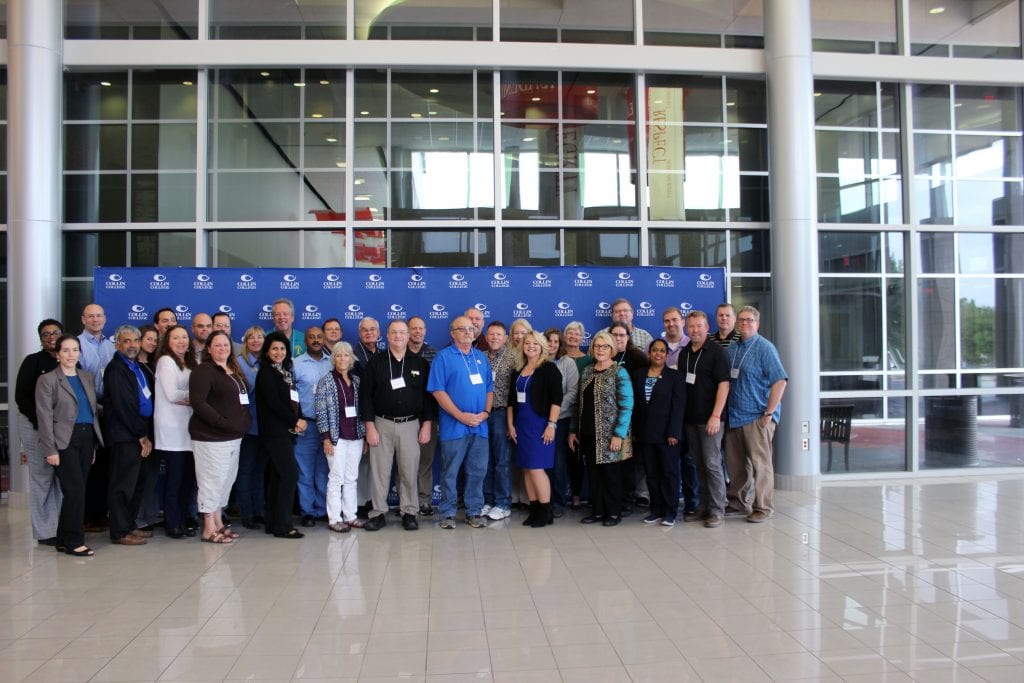Measuring the CTC’s Community of Practice Engagement

Each spring, the National Convergence Technology Center (CTC) asks for impact data from the 69 colleges in its “Convergence College Network” (CCN) community of practice. This information forms an important part of the grant reporting that the CTC provides both to the National Science Foundation and to the annual National Visiting Committee review panel. Out of 69 colleges, 36 (52%) submitted detailed reports, which provides an interesting snapshot of these IT programs across 19 states that the CTC supports with training, resources, and networking opportunities.
These 36 colleges reported…
- 16,807 enrollments in fall 2018 (split 75% male and 25% female)
- 3,704 completions (1,879 degrees and 1,825 certificates)
- 441 articulation agreements (305 high school to two-year colleges; 136 two-year colleges to four-year universities) supporting 2989 students
- 121 courses added or modified based on curriculum feedback from their local BILT (Business and Industry Leadership Teams)
Beyond those broad program numbers, the CTC is particularly interested in the ongoing CCN adoption of the BILT model. This idea – that business and industry leaders must co-lead a program to ensure students are learning the skills the workforce demands – is the cornerstone of the CTC grant. Put simply, engaged employers that regularly meet with educators develop an ownership of the program and are more likely to hire graduates.

Looking at the reporting from those 36 CCN colleges, here’s a look at the adoption of the essential elements to a successful BILT model implementation…
- 28 (78%) invite faculty to their BILT meetings – faculty needs to hear feedback and recommendations directly from the BILT, not an intermediary
- 28 (78%) conduct an annual job skills validation – asking the BILT to update the list of entry-level job skills they would want to see in the next two years
- 27 (75%) report back to the BILT on what they can/cannot do – it’s important not only to make sure the BILT feels valued and heard, not ignored, but also to give the BILT the chance to help your program overcome barriers and solve problems
- 26 (72%) feature trends discussion at BILT meetings – every BILT meeting should set aside time for faculty to hear about where the industry is going
- 24 (67%) have a system in place to track career paths of graduates – for the CCN colleges, the systems vary widely in effectiveness; some use institutional tools, others rely on surveys or LinkedIn updates
- 23 (64%) reported that program/course changes were made based on BILT feedback – that’s the 121 courses listed above; keeping curriculum current with industry needs is the primary motivation of the CTC’s BILT model
- 23 (64%) convene their BILT at least twice a year – to tighten the relationships and boost engagement, it’s essential that your BILT meets more than once a year; remember the adage “out of sight, out of mind”
- 19 conduct their annual job skills validation via a vote – it’s important to talk in detail each year about job skill needs, but the best way to organize this discussion and capture the results is to frame it as a vote for each skill one by one
- 6 (17%) convene more than two BILT meetings a year – some schools schedule a third meeting in the summer, which further connects their program to their employers
How many of these best practices is your program following?
Learn more about the BILT model by watching this webinar or by downloading this toolkit.
